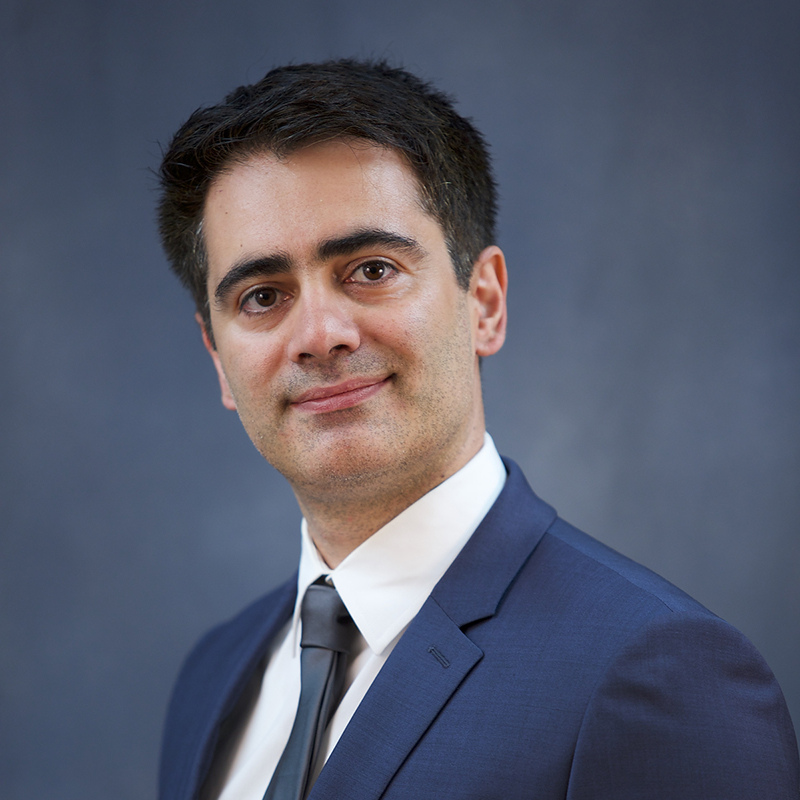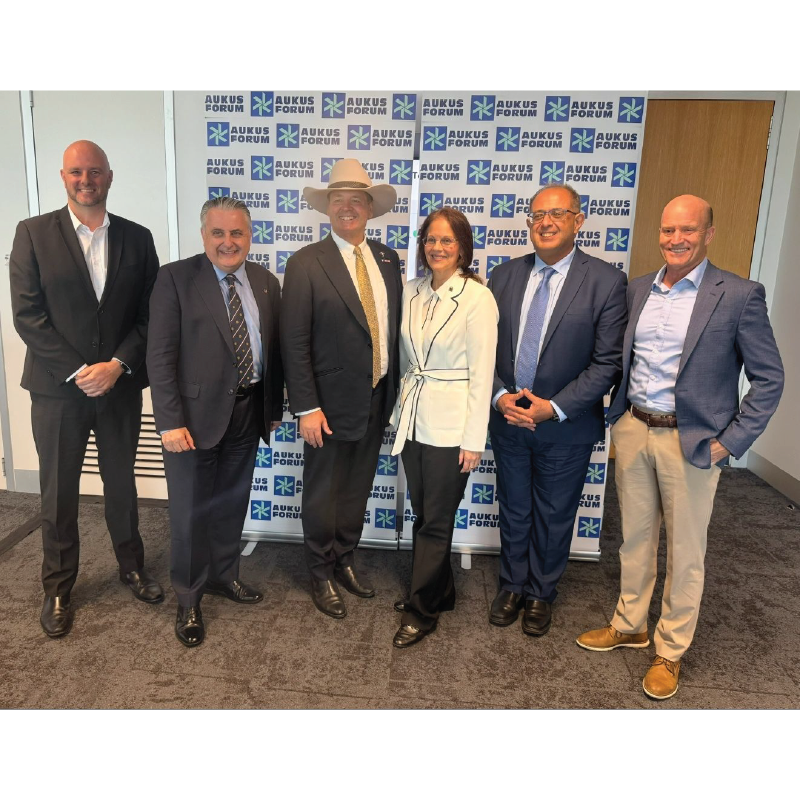News Story
ECE Announces Recipients of 2024 Distinguished Alumni Awards

Clockwise from top left: Archan Misra, Arun Raghupathy, Pavan Turaga, Ahmed Sadek
The University of Maryland Department of Electrical and Computer Engineering has announced the recipients of this year’s Distinguished Alumni Awards. This year’s alums have a variety of exceptional backgrounds across multiple disciplines. They were nominated by ECE faculty members in recognition of their significant accomplishments.
The awards will be presented on November 15th at an event honoring this year’s Distinguished Alumni.
This year’s awardees are:
Archan Misra (EE Ph.D. ’00)
Archan Misra is the Vice Provost (Research) and Lee Kong Chian Chair Professor of Computer Science at Singapore Management University. After earning his BS from the Indian Institute of Technology in Kharagpur, India, Misra received his MS degree in 1996 and a Ph.D. in electrical engineering in 2000. He was nominated by Professor John Baras.
Misra’s research interests include mobile and wearable sensing, low-power AI+ IoT (AIOT) systems, augmented reality (AR), multi-modal instruction comprehension for situated agents and urban analytics for Smart City solutions. His technological innovations and leadership expertise have contributed greatly to the development of “smart city” and AI technologies in Singapore, which is considered the world’s “smartest nation”, aligned with the government’s vision of building a digitally enabled and inclusive city and nation. As part of his public contributions to Singapore, he serves as a Scientific Advisor to the Ministry of National Development on the application of digital technologies to urban challenges and on the Management Committee of AI Singapore, Singapore’s national-level initiative to anchor research, innovation and enterprise in AI. In appreciation of his leadership of institutional and national research programs, Misra has also been honored with Singapore’s National Public Administration Medal (Silver).
Highly recognized as a leading authority on low-power pervasive sensing and sense-making, Misra has developed ultra-low power wearable devices, including WiWear, the first battery-less wrist-worn device that is charged purely by WiFi beamforming, and PABLO, a pioneering battery-less audio badge that supports capture and transmission of authenticated voice commands. He has also improved the energy efficiency and throughput of wireless transmission by combining in-depth analysis of wireless channel behavior with non-linear optimization techniques.
Misra has been honored four times as one of the top 2% “Networking & Telecommunications” researchers worldwide by the Stanford Study. He was named ACM Distinguished Member 2021 for “outstanding engineering contributions to computing.” He has also won 7 best paper awards, been an invited keynote speaker at over 30 international conferences, has authored or co-authored over 150 publications, and was the Chair of the IEEE Computer Society’s Technical Committee on Computer Communications (TCCC) from 2005-2007.
Arun Raghupathy (EE Ph. D ’99)
Arun Raghupathy is the co‐founder and Chief Technology Officer of NextNav Inc. (Nasdaq: NN), a leader in next generation positioning, navigation and timing (PNT) and 3D geolocation, enabling a whole new ecosystem of applications and services that rely upon 3D geolocation and PNT technology. Powered by low‐band licensed spectrum, NextNav’s positioning and timing technologies deliver accurate, reliable, and resilient 3D PNT solutions for critical infrastructure, GPS resiliency and commercial use cases.
He was a member of nominator Professor Ray Liu’s Signal Processing Group, where he studied VLSI for signal processing and communications. Arun earned his bachelor’s degree in technology and electronics (electrical?) engineering and communications from the Indian Institute of Technology, Madras.
As head of Engineering at NextNav, Raghugathy oversees Systems, Algorithms, Hardware, Firmware and Software domains. The company’s 3D geolocation technology has had a major impact on urban and indoor positioning for public safety and commercial applications. His research has contributed to critical IP and system design for the company’s suite of solutions, with more than 50 issues patents.
As a critical part of the modern economy, GPS has broad use in critical infrastructure including in emergency response/public safety, synchronizing wireless networks, timing for financial transactions and the utilities sector/power grid. NextNav is focused on solving a national security crisis: to enable a terrestrial PNT backup and complement to satellite‐based GPS should it go dark. NextNav’s proposal before the FCC offers a solution to safeguard a system than underpins American commerce, public safety and national security, and would provide enormous benefits to the public at no cost to taxpayers and without any new legislation required.
Prior to co‐founding NextNav, he spent more than 10 years as a technology leader developing innovative ideas and helping produce commercial products at multiple technology companies. At Qualcomm, he was involved in technology development for cellular modems including key contributions to transmitter design. At Texas Instruments, he led the GPS Systems Team as a systems architect, where he created GPS measurement and positioning techniques used in multiple generations of smartphone multi‐radio chipsets.
Ahmed K. Sadek (EE Ph.D. ’07)
Ahmed Sadek is Vice President of Engineering and Chief System Architect Automated Driving with Qualcomm. He was nominated by Professor Ray Liu.
After graduating from Alexandria University, Egypt, Sadek joined UMD through an Outstanding Graduate School Fellowship. At UMD, he joined Professor’s Liu’s Signal and Information research group, where he honed his skills in research and analytical thinking. After receiving his Ph.D. in electrical engineering, he joined Qualcomm, a multinational company that specializes in designing and manufacturing semiconductors, software and services related to wireless technology.
Originally hired as a systems engineer, Sadek advanced to Principal Engineer, Director of Engineering and then his current position. As Chief System Architect of Automated Driving, Sadek has led the research and development of Qualcomm’s first foray into the field of autonomous vehicles. As a result of his leadership, in 2021 Qualcomm announced a collaboration with BMW to develop assistance technologies for the next generation of advanced driver-assistance systems (ADAS).
Sadek’s accomplishments through research include the use of AI in autonomous driving (AD) technologies in perception, localization, mapping , prediction and drive policy, and scalable AD solutions through active learning, continuous learning, and designing automated ground truth and annotation pipelines to optimize data collection/storage/annotation and training.
Along with being recognized with a Qualcomm Research Distinguished Technical Contributor Award, he has issued over 120 U.S. patents and worldwide patents and has published over 50 papers in international journals, conferences, and books. He also co-authored the book Cooperative Communications and Networking through Cambridge University Press.
Pavan Turaga (EE Ph.D. ’09)
Pavan Turaga is the Director of the School of Arts, Media, and Engineering at Arizona State University, where they also hold a joint appointment with the School of Electrical, Computer, and Energy Engineering. They were nominated by former advisor, Professor Rama Chellappa.
Turaga joined ECE after earning a bachelor of technology degree from the Indian Institute of Technology, Guwahati in 2004. At UMD, they studied signal processing and machine learning for computer vision. After receiving their Ph.D., they spent two years as a Research Associate at the UMD Center for Automation Research.
Turaga joined Arizona State in 2011. As a member of two departments, he has successfully united arts and engineering, resulting in collaborations between media designers, artists, scientists and engineers. The projects have created unique interdisciplinary research spanning over many fields, including imaging, health and wellness, wearables, media systems for entertainment and novel educational innovations. In addition, they continue to direct research in their Geometric Media Lab, studying machine learning, geometric techniques, and interactive media arts.
Fundamental ideas on how to advance robustness, interpretability, and generalization of machine learning techniques across many types of sensor data has been the focus of their research, resulting in recognition and sponsorships from organizations such as the National Science Foundation (NSF), the National Institutes of Health (NIH) and the Defense Advanced Research Projects Agency (DARPA) Geometries of Learning Program.
In 2015, they received an NSF CAREER award and have been recognized with multiple Best Paper Awards from IEEE and Deep Learning meets Geometric Computing (DLGC) workshop. Their interdisciplinary collaboration with filmmaker Max Bernstein titled “The Air Around Us” was displayed at the Scottsdale Museum of Contemporary Art, a project aimed at increasing public understanding of urban air quality via interactive media technologies.
Published November 11, 2024









